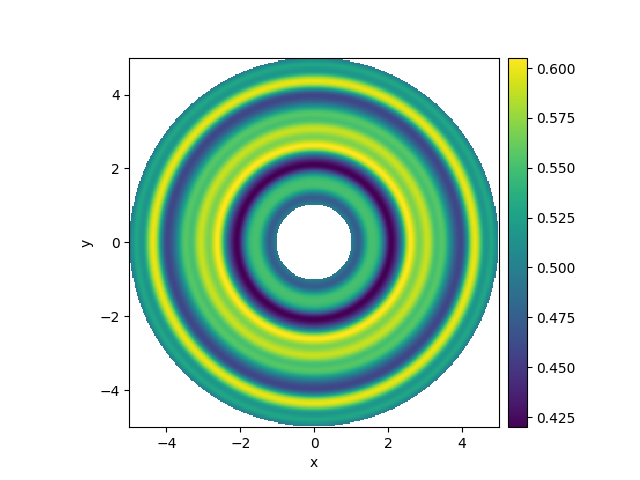Note
Click here to download the full example code
2.7. Spherically symmetric PDE¶
This example illustrates how to solve a PDE in a spherically symmetric geometry.

0%| | 0/0.1 [00:00<?, ?it/s]
Initializing: 0%| | 0/0.1 [00:00<?, ?it/s]
0%| | 0/0.1 [00:03<?, ?it/s]
6%|6 | 0.006/0.1 [00:03<00:57, 611.47s/it]
14%|#4 | 0.014/0.1 [00:04<00:26, 305.39s/it]
24%|##4 | 0.024/0.1 [00:04<00:13, 178.16s/it]
24%|##4 | 0.024/0.1 [00:04<00:13, 178.18s/it]
100%|##########| 0.1/0.1 [00:04<00:00, 42.76s/it]
100%|##########| 0.1/0.1 [00:04<00:00, 42.77s/it]
from pde import DiffusionPDE, ScalarField, SphericalSymGrid
grid = SphericalSymGrid(radius=[1, 5], shape=128) # generate grid
state = ScalarField.random_uniform(grid) # generate initial condition
eq = DiffusionPDE(0.1) # define the PDE
result = eq.solve(state, t_range=0.1, dt=0.001)
result.plot(kind="image")
Total running time of the script: ( 0 minutes 4.759 seconds)